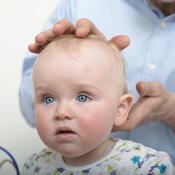Specific Adjustment Techniques
Developed by the principal of the European School of Osteopathy, Tom Dummer, DO.
SAT involves understanding the patients expression of their “Total Lesion Pattern” and by accurate and specific application of Osteopathic techniques, reducing their total lesion pattern, thereby bringing the patient into a greater state of health and adaptation.
The method uses highly potent, yet gentle manipulation of the spine and pelvis in a “floating field” so that the articular surfaces are never locked during the adjustment. This creates a highly effective method of influencing the neuromuscular component of a lesion as well as the ligamentous and boney portions.
The Course covers the knowledge and treatment of the following topics:-
- Anatomical review of the spine and pelvis with specific reference to the SAT concept.
- The theory and application of the “total lesion” concept, including diagnostics, practicals and demonstrations to enhance learning of the method.
- The theory of the use of X-rays in diagnosis of the upper cervical spine
- The theory and diagnosis of “positional lesions” of the neck, spine and pelvis.
- The application of soft tissue “neuromuscular friction techniques” within the SAT concept
- Manipulation of the upper cervical spine to reduce positional lesions
- Manipulation of the upper cervical spine to reduce the total lesion
- Manipulation of the thorax and lumbars with inclusion of the somatic and visceral reflexes
- Manipulation of the boney pelvis within the total lesion concept and the visceral reflexes.
Students with all levels of experience will benefit from this course.
This course will run for 3 days, giving approximately 24 hours of CPD.
